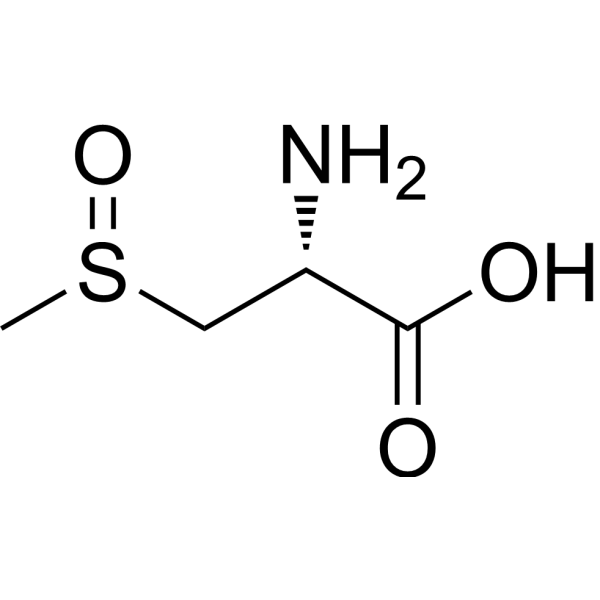
NSC-226572
CAS No. 6853-87-8
NSC-226572 ( Methyiin, pyrolyzate | NSC 226572 | NSC-226572 | NSC226572 )
产品货号. M27151 CAS No. 6853-87-8
NSC-226572 是一种蒜氨酸的合成类似物,存在于十字花科蔬菜中,包括卷心菜、萝卜、花椰菜和羽衣甘蓝。 NSC-226572 通过蒜氨酸酶活性转化为挥发性硫代亚磺酸盐。
纯度: >98% (HPLC)
 COA
COA
 Datasheet
Datasheet
 HNMR
HNMR
 HPLC
HPLC
 MSDS
MSDS
 Handing Instructions
Handing Instructions
| 规格 | 价格/人民币 | 库存 | 数量 |
| 50MG | ¥429 | 有现货 |


|
| 100MG | ¥616 | 有现货 |


|
| 200MG | ¥964 | 有现货 |


|
| 500MG | 获取报价 | 有现货 |


|
| 1G | 获取报价 | 有现货 |


|
生物学信息
-
产品名称NSC-226572
-
注意事项本公司产品仅用于科研实验,不得用于人体或动物的临床与诊断
-
产品简述NSC-226572 是一种蒜氨酸的合成类似物,存在于十字花科蔬菜中,包括卷心菜、萝卜、花椰菜和羽衣甘蓝。 NSC-226572 通过蒜氨酸酶活性转化为挥发性硫代亚磺酸盐。
-
产品描述NSC-226572 is a synthetic analog of alliin found in cruciferous vegetables including cabbage, turnip, cauliflower, and kale. NSC-226572 is converted through alliinase activity into a volatile thiosulfinate.
-
体外实验Amino acids and amino acid derivatives have been commercially used as ergogenic supplements. They influence the secretion of anabolic hormones, supply of fuel during exercise, mental performance during stress related tasks and prevent exercise induced muscle damage. They are recognized to be beneficial as ergogenic dietary substances.
-
体内实验——
-
同义词Methyiin, pyrolyzate | NSC 226572 | NSC-226572 | NSC226572
-
通路Others
-
靶点Other Targets
-
受体Galanin receptor
-
研究领域——
-
适应症——
化学信息
-
CAS Number6853-87-8
-
分子量151.18
-
分子式C4H9NO3S
-
纯度>98% (HPLC)
-
溶解度——
-
SMILESCS(=O)C[C@@H](N)C(O)=O
-
化学全称——
运输与储存
-
储存条件(-20℃)
-
运输条件With Ice Pack
-
稳定性≥ 2 years
参考文献
1.Hilke S, et al. A short estrogen-responsive N-terminal galanin homologue found in rat brain and gut with antiserum raised against rat galanin(1-16). Neurochem Res. 2006 Feb;31(2):177-88.
产品手册




关联产品
-
2,3-Dihydrofuran
2,3-二氢呋喃是一种杂环化合物。它是最简单的烯醇醚之一。
-
GSK199
GSK199 是一种选择性 PAD4 抑制剂(无钙条件下 IC50 为 200 nM)。
-
N-Methylcoclaurine
(±)-N-Methylcoclaurine 是一种选择性的 α2-肾上腺素受体拮抗剂。



 021-51111890
021-51111890 购物车()
购物车()
 sales@molnova.cn
sales@molnova.cn







